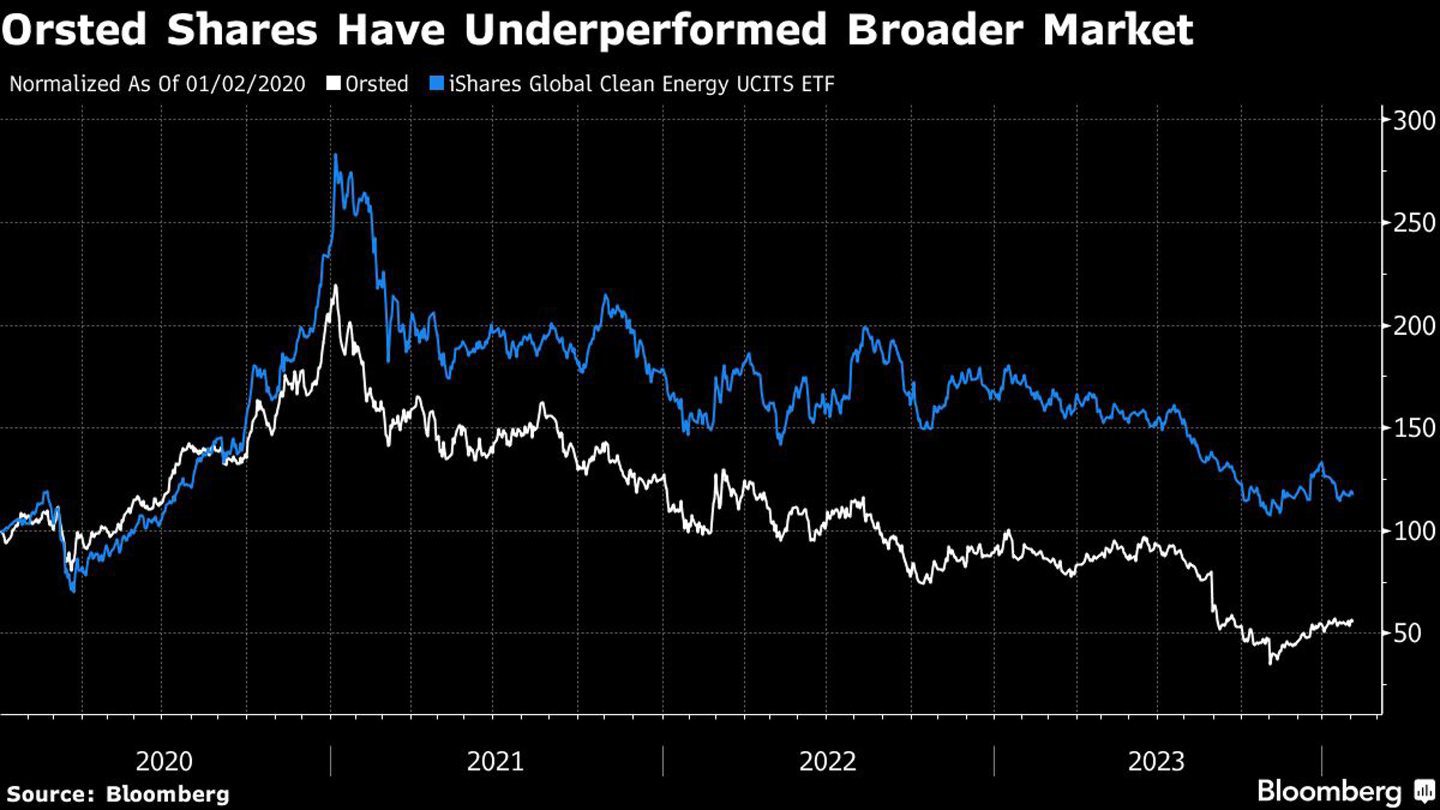Wind-energy titan Orsted A/S (CPH:ORSTED) will pitch its strategic plan to investors this week, after a disastrous 2023 that saw a multi-billion-dollar writedown on US projects and the dismissal of two top executives.
Just eight months after its last major update to shareholders, the firm will seek to make the case that supply-chain issues and soaring costs are now contained. Chief Executive Officer Mads Nipper will need to present a convincing recovery plan after overseeing Orsted’s value slide to less than a third of its 2021 peak.
“A lot of the trust in management disappeared,” said Casper Blom, an analyst at Danske Bank A/S. At Wednesday’s presentation, “they need to be detailed in the plan to try and restore some of that trust.”
One easy win would be to cancel the dividend, Blom said. Orsted is essentially a growth stock, with most private investors keen that it finance future expansion rather than return cash to shareholders. Doing so would also help the company avoid issuing new capital, something that could endanger its credit rating.
A Bernstein survey found that cutting the dividend is investors’ preferred option to bolster the balance sheet, followed by cost cuts and asset sales. About two-thirds of respondents said an equity raise was their least favored course of action.
At Orsted’s capital markets day last June, managers appeared confident they’d ride out the storm of ballooning costs, supply bottle necks and rising interest rates that had upended the offshore wind business.
The Danish company had ambitious plans in the US, where it saw an opportunity to replicate its leading position in Europe. Management assured investors that the American portfolio was still on track, betting on an improvement in tax provisions for wind farms such as its Ocean Wind 1 project off New Jersey.
Orsted projects scrapped
Shortly afterward, Orsted conceded that talks on tax benefits weren’t progressing as well as it had hoped. By the end of October, the company had abandoned Ocean Wind 1 and its successor, Ocean Wind 2. The setbacks to the US business came at a total cost of 28.4 billion Danish kroner ($4.1 billion).
For a company that’s developed offshore wind farms since the 1990s, the decision to ditch the American projects shocked investors and sent the stock down 26% in one day. Nipper dismissed Chief Financial Officer Daniel Lerup and Chief Operating Officer Richard Hunter soon after.
After a troubled year, executives need to put forward a specific plan Wednesday for repairing the balance sheet. But they must also answer concerns and explain how they got it so wrong, said Deepa Venkateswaran, an analyst at Bernstein.
“Historically, they’ve always had a track record of being on budget, on time, ahead of costs,” Venkateswaran said. “Now risk management is broken.”
Recommended for you




 © Supplied by Bloomberg
© Supplied by Bloomberg






